-
 Bitcoin
Bitcoin $83,205.0203
-2.55% -
 Ethereum
Ethereum $1,575.2742
-4.49% -
 Tether USDt
Tether USDt $0.9998
0.00% -
 XRP
XRP $2.0969
-2.59% -
 BNB
BNB $581.6935
-2.75% -
 Solana
Solana $126.0494
-4.63% -
 USDC
USDC $0.9998
-0.02% -
 Dogecoin
Dogecoin $0.1618
-3.59% -
 TRON
TRON $0.2525
2.34% -
 Cardano
Cardano $0.6343
-3.56% -
 UNUS SED LEO
UNUS SED LEO $9.2941
-0.24% -
 Chainlink
Chainlink $12.5011
-5.43% -
 Avalanche
Avalanche $19.3931
-5.63% -
 Stellar
Stellar $0.2362
-4.04% -
 Sui
Sui $2.2141
-5.83% -
 Toncoin
Toncoin $2.8584
-6.05% -
 Shiba Inu
Shiba Inu $0.0...01200
-4.50% -
 Hedera
Hedera $0.1645
-5.67% -
 Bitcoin Cash
Bitcoin Cash $341.0078
-1.31% -
 Litecoin
Litecoin $76.9728
-2.09% -
 Polkadot
Polkadot $3.6574
-1.60% -
 Dai
Dai $1.0000
-0.02% -
 Bitget Token
Bitget Token $4.2769
-3.16% -
 Hyperliquid
Hyperliquid $15.0799
-9.33% -
 Ethena USDe
Ethena USDe $0.9989
-0.02% -
 Pi
Pi $0.7202
-3.36% -
 Monero
Monero $202.6034
-1.88% -
 Uniswap
Uniswap $5.2907
-4.31% -
 OKB
OKB $52.9004
-1.67% -
 Pepe
Pepe $0.0...07189
-3.56%
How is the "roll cost" of a futures Bitcoin ETF generated?
The roll cost of a Bitcoin futures ETF, arising from rolling over contracts, impacts performance; contango can drag returns, while backwardation may enhance them.
Apr 08, 2025 at 01:22 pm
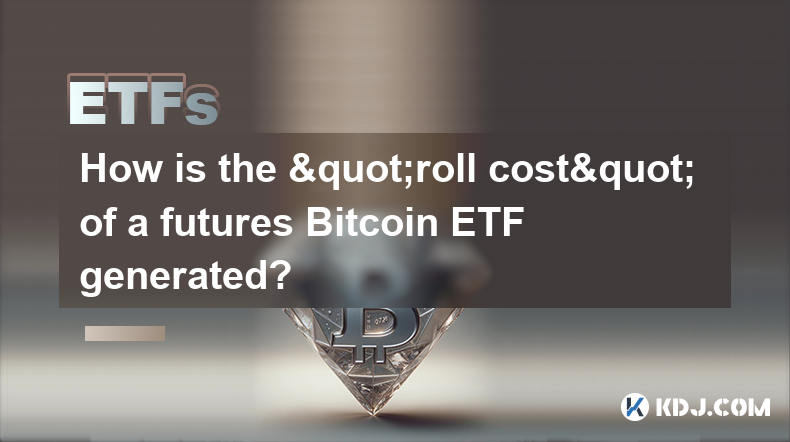
The "roll cost" of a futures Bitcoin ETF is a critical concept for investors to understand, as it directly impacts the performance of the ETF. In this article, we will delve into the mechanics of how the roll cost is generated, exploring the underlying processes and factors that contribute to this cost.
Understanding Futures Contracts
Futures contracts are financial derivatives that obligate the buyer to purchase, and the seller to sell, a specific asset at a predetermined price on a specified future date. In the context of a Bitcoin futures ETF, these contracts are used to gain exposure to Bitcoin without directly holding the cryptocurrency. The ETF holds a portfolio of Bitcoin futures contracts, which are periodically rolled over to maintain exposure to Bitcoin.
The Process of Rolling Over Futures Contracts
The roll cost arises from the process of rolling over futures contracts. When a futures contract nears its expiration date, the ETF must sell the expiring contract and purchase a new contract with a later expiration date. This process is known as rolling over. The difference between the price of the expiring contract and the new contract is what generates the roll cost.
- Selling the expiring contract: The ETF sells the futures contract that is about to expire at its current market price.
- Purchasing the new contract: The ETF then buys a new futures contract with a later expiration date at its current market price.
The roll cost is the difference between these two prices. If the new contract is more expensive than the expiring contract, the ETF incurs a contango situation, resulting in a negative roll cost. Conversely, if the new contract is cheaper, the ETF benefits from a backwardation situation, resulting in a positive roll cost.
Factors Influencing Roll Cost
Several factors influence the roll cost of a Bitcoin futures ETF:
- Market Sentiment: The overall sentiment towards Bitcoin can affect the pricing of futures contracts. If investors are bullish on Bitcoin, the prices of futures contracts with later expiration dates may be higher, leading to contango.
- Supply and Demand: The supply and demand dynamics of Bitcoin futures contracts can also impact roll costs. High demand for futures contracts can drive up prices, increasing the likelihood of contango.
- Time to Expiration: The time remaining until the expiration of the futures contract can influence its price. Contracts with longer durations until expiration may be priced higher due to the increased uncertainty over a longer period.
Calculating the Roll Cost
To calculate the roll cost, investors need to consider the following steps:
- Identify the expiring contract: Determine the price of the futures contract that is about to expire.
- Identify the new contract: Determine the price of the new futures contract with a later expiration date.
- Calculate the difference: Subtract the price of the expiring contract from the price of the new contract to find the roll cost.
For example, if the expiring contract is priced at $40,000 and the new contract is priced at $41,000, the roll cost would be $41,000 - $40,000 = $1,000 per contract. This represents a contango situation, resulting in a negative roll cost for the ETF.
Impact of Roll Cost on ETF Performance
The roll cost has a direct impact on the performance of a Bitcoin futures ETF. A persistent contango situation can lead to a drag on the ETF's returns, as the ETF incurs a cost each time it rolls over its futures contracts. This drag can erode the ETF's performance over time, especially if the roll costs are significant.
Conversely, a backwardation situation can enhance the ETF's returns, as the ETF benefits from a positive roll cost. However, backwardation is less common in the Bitcoin futures market, making contango the more prevalent scenario.
Managing Roll Cost
ETF managers employ various strategies to manage the impact of roll costs on their funds:
- Diversifying Contract Expirations: By holding futures contracts with different expiration dates, ETF managers can spread out the roll costs over time, reducing the impact on the ETF's performance.
- Active Management: Some ETFs use active management strategies to select the most advantageous futures contracts, potentially reducing roll costs.
- Hedging: ETF managers may use hedging strategies to mitigate the impact of roll costs, although this can introduce additional costs and complexities.
Conclusion
Understanding the roll cost of a Bitcoin futures ETF is essential for investors looking to gain exposure to Bitcoin through these financial instruments. The roll cost arises from the process of rolling over futures contracts and is influenced by market sentiment, supply and demand, and the time to expiration of the contracts. While contango situations can lead to a drag on the ETF's performance, ETF managers employ various strategies to manage and mitigate the impact of roll costs.
Frequently Asked Questions
Q: Can the roll cost of a Bitcoin futures ETF be negative?
A: Yes, the roll cost can be negative if the ETF is in a backwardation situation, where the new futures contract is cheaper than the expiring contract. However, backwardation is less common in the Bitcoin futures market.
Q: How often do Bitcoin futures ETFs roll over their contracts?
A: The frequency of rolling over futures contracts depends on the specific ETF and its strategy. Typically, Bitcoin futures ETFs roll over their contracts on a monthly basis, as most Bitcoin futures contracts have a monthly expiration cycle.
Q: Are there any Bitcoin ETFs that do not incur roll costs?
A: Yes, there are Bitcoin ETFs that hold physical Bitcoin rather than futures contracts. These spot Bitcoin ETFs do not incur roll costs, as they do not need to roll over futures contracts. However, they may face other costs and considerations, such as custody and security expenses.
Q: Can roll costs be predicted in advance?
A: Predicting roll costs with certainty is challenging, as they are influenced by various market factors. However, investors can monitor market conditions and the futures curve to gain insights into potential roll costs. ETFs that provide transparency about their futures holdings can also help investors anticipate roll costs.
Disclaimer:info@kdj.com
The information provided is not trading advice. kdj.com does not assume any responsibility for any investments made based on the information provided in this article. Cryptocurrencies are highly volatile and it is highly recommended that you invest with caution after thorough research!
If you believe that the content used on this website infringes your copyright, please contact us immediately (info@kdj.com) and we will delete it promptly.
- Mantra, Once a Beacon of Hope in RWA Tokenization, Collapses Overnight, Losing 90% of Its Market Cap
- 2025-04-14 06:25:12
- Here's Why Mantra (OM) Price Crashed 90%
- 2025-04-14 06:25:12
- BlockDAG's $214M Presale and Upcoming 7th AMA Signal a Market Shift
- 2025-04-14 06:20:12
- Solaxy is a Layer 2 project built to enhance Solana's infrastructure by addressing its long-standing congestion and scalability issues.
- 2025-04-14 06:20:12
- Bitcoin (BTC/USD) is Outpacing the S&P 500 as Market Panic Continues, Analyst Says
- 2025-04-14 06:15:13
- Over the Past Year, Shiba Inu Has Struggled to Keep Pace with Dogecoin
- 2025-04-14 06:15:13
Related knowledge
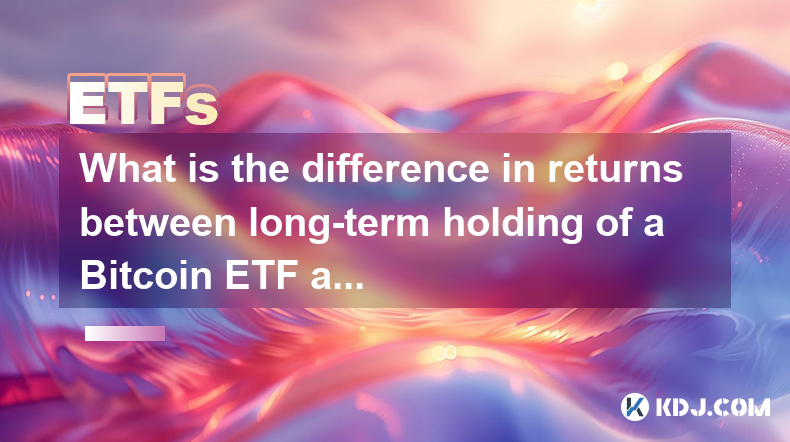
What is the difference in returns between long-term holding of a Bitcoin ETF and holding Bitcoin directly?
Apr 09,2025 at 04:15am
When considering the difference in returns between long-term holding of a Bitcoin ETF and holding Bitcoin directly, it's essential to understand the nuances and factors that affect each investment option. Both approaches have their unique advantages and potential drawbacks, which can significantly impact the overall returns over time. Understanding Bitc...

How is the "roll cost" of a futures Bitcoin ETF generated?
Apr 08,2025 at 01:22pm
The 'roll cost' of a futures Bitcoin ETF is a critical concept for investors to understand, as it directly impacts the performance of the ETF. In this article, we will delve into the mechanics of how the roll cost is generated, exploring the underlying processes and factors that contribute to this cost. Understanding Futures ContractsFutures contracts a...
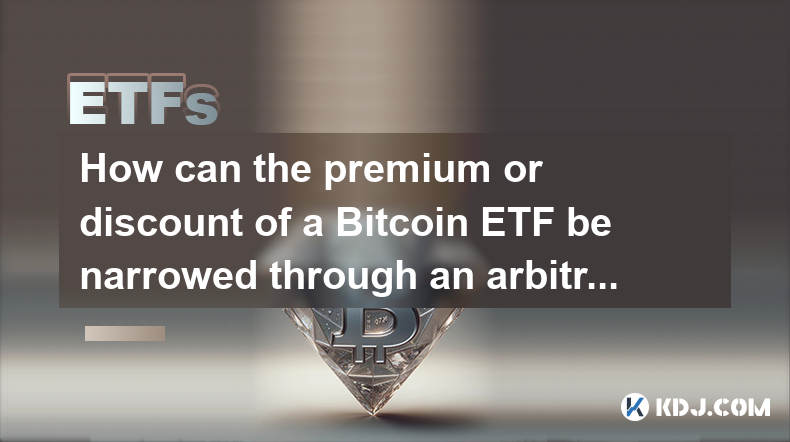
How can the premium or discount of a Bitcoin ETF be narrowed through an arbitrage mechanism?
Apr 09,2025 at 12:07am
Arbitrage mechanisms play a crucial role in narrowing the premium or discount of a Bitcoin Exchange Traded Fund (ETF). Understanding how these mechanisms work can provide valuable insights into the dynamics of Bitcoin ETFs and their relationship with the underlying asset. This article will delve into the specifics of how arbitrage can be used to align t...

What factors affect the bid-ask spread of a Bitcoin ETF?
Apr 08,2025 at 08:50pm
The bid-ask spread of a Bitcoin Exchange Traded Fund (ETF) is a critical metric that investors and traders closely monitor. It represents the difference between the highest price a buyer is willing to pay (bid) and the lowest price a seller is willing to accept (ask). Several factors influence this spread, and understanding them can help investors make ...
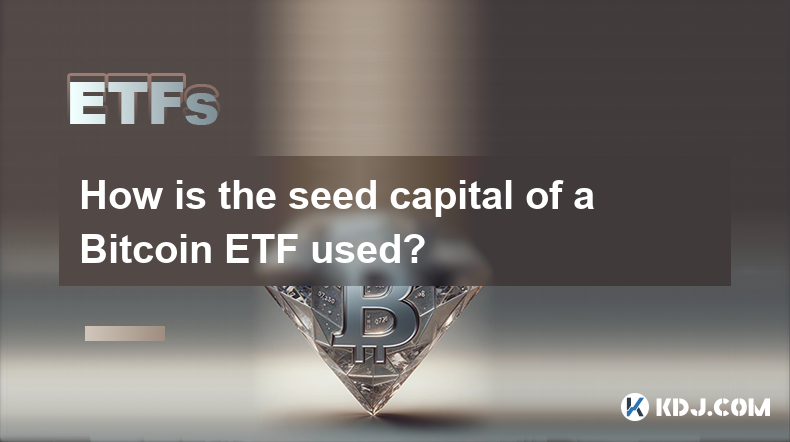
How is the seed capital of a Bitcoin ETF used?
Apr 10,2025 at 02:15pm
The seed capital of a Bitcoin ETF plays a crucial role in the establishment and operation of the fund. This initial investment is used to create the fund's underlying assets, manage operational costs, and ensure the ETF can start trading on an exchange. Understanding how this seed capital is utilized provides insight into the mechanics of Bitcoin ETFs a...
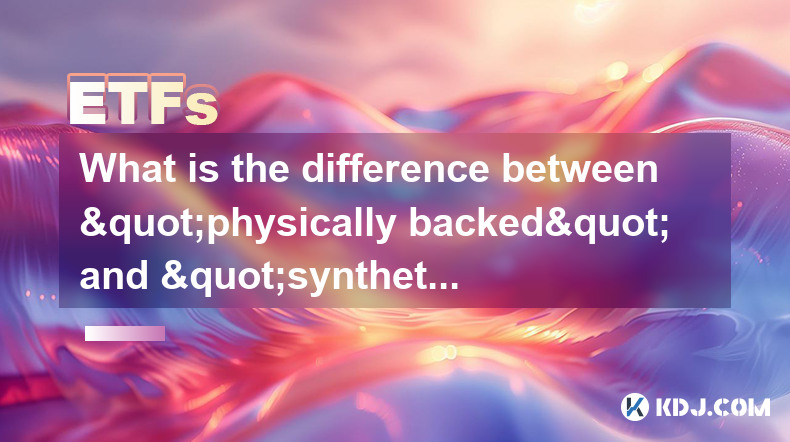
What is the difference between "physically backed" and "synthetic" Bitcoin ETFs in terms of holding assets?
Apr 10,2025 at 04:56pm
Bitcoin Exchange Traded Funds (ETFs) have become a popular way for investors to gain exposure to the cryptocurrency market without directly owning the underlying asset. There are two primary types of Bitcoin ETFs: physically backed and synthetic. Understanding the differences between these two types, particularly in terms of how they hold assets, is cru...

What is the difference in returns between long-term holding of a Bitcoin ETF and holding Bitcoin directly?
Apr 09,2025 at 04:15am
When considering the difference in returns between long-term holding of a Bitcoin ETF and holding Bitcoin directly, it's essential to understand the nuances and factors that affect each investment option. Both approaches have their unique advantages and potential drawbacks, which can significantly impact the overall returns over time. Understanding Bitc...

How is the "roll cost" of a futures Bitcoin ETF generated?
Apr 08,2025 at 01:22pm
The 'roll cost' of a futures Bitcoin ETF is a critical concept for investors to understand, as it directly impacts the performance of the ETF. In this article, we will delve into the mechanics of how the roll cost is generated, exploring the underlying processes and factors that contribute to this cost. Understanding Futures ContractsFutures contracts a...

How can the premium or discount of a Bitcoin ETF be narrowed through an arbitrage mechanism?
Apr 09,2025 at 12:07am
Arbitrage mechanisms play a crucial role in narrowing the premium or discount of a Bitcoin Exchange Traded Fund (ETF). Understanding how these mechanisms work can provide valuable insights into the dynamics of Bitcoin ETFs and their relationship with the underlying asset. This article will delve into the specifics of how arbitrage can be used to align t...

What factors affect the bid-ask spread of a Bitcoin ETF?
Apr 08,2025 at 08:50pm
The bid-ask spread of a Bitcoin Exchange Traded Fund (ETF) is a critical metric that investors and traders closely monitor. It represents the difference between the highest price a buyer is willing to pay (bid) and the lowest price a seller is willing to accept (ask). Several factors influence this spread, and understanding them can help investors make ...

How is the seed capital of a Bitcoin ETF used?
Apr 10,2025 at 02:15pm
The seed capital of a Bitcoin ETF plays a crucial role in the establishment and operation of the fund. This initial investment is used to create the fund's underlying assets, manage operational costs, and ensure the ETF can start trading on an exchange. Understanding how this seed capital is utilized provides insight into the mechanics of Bitcoin ETFs a...

What is the difference between "physically backed" and "synthetic" Bitcoin ETFs in terms of holding assets?
Apr 10,2025 at 04:56pm
Bitcoin Exchange Traded Funds (ETFs) have become a popular way for investors to gain exposure to the cryptocurrency market without directly owning the underlying asset. There are two primary types of Bitcoin ETFs: physically backed and synthetic. Understanding the differences between these two types, particularly in terms of how they hold assets, is cru...
See all articles























































































